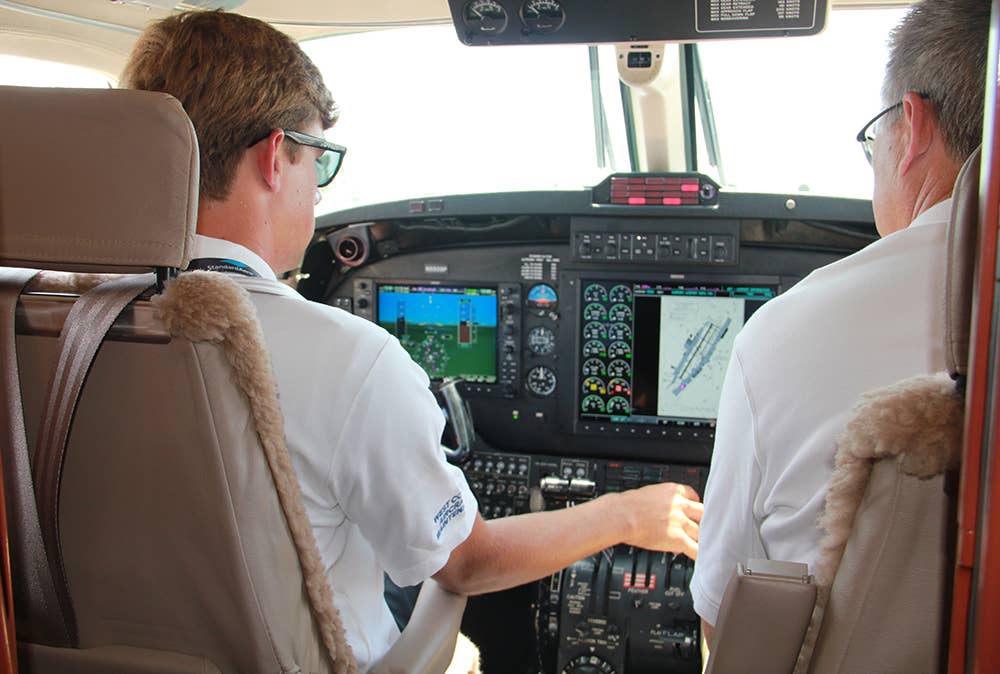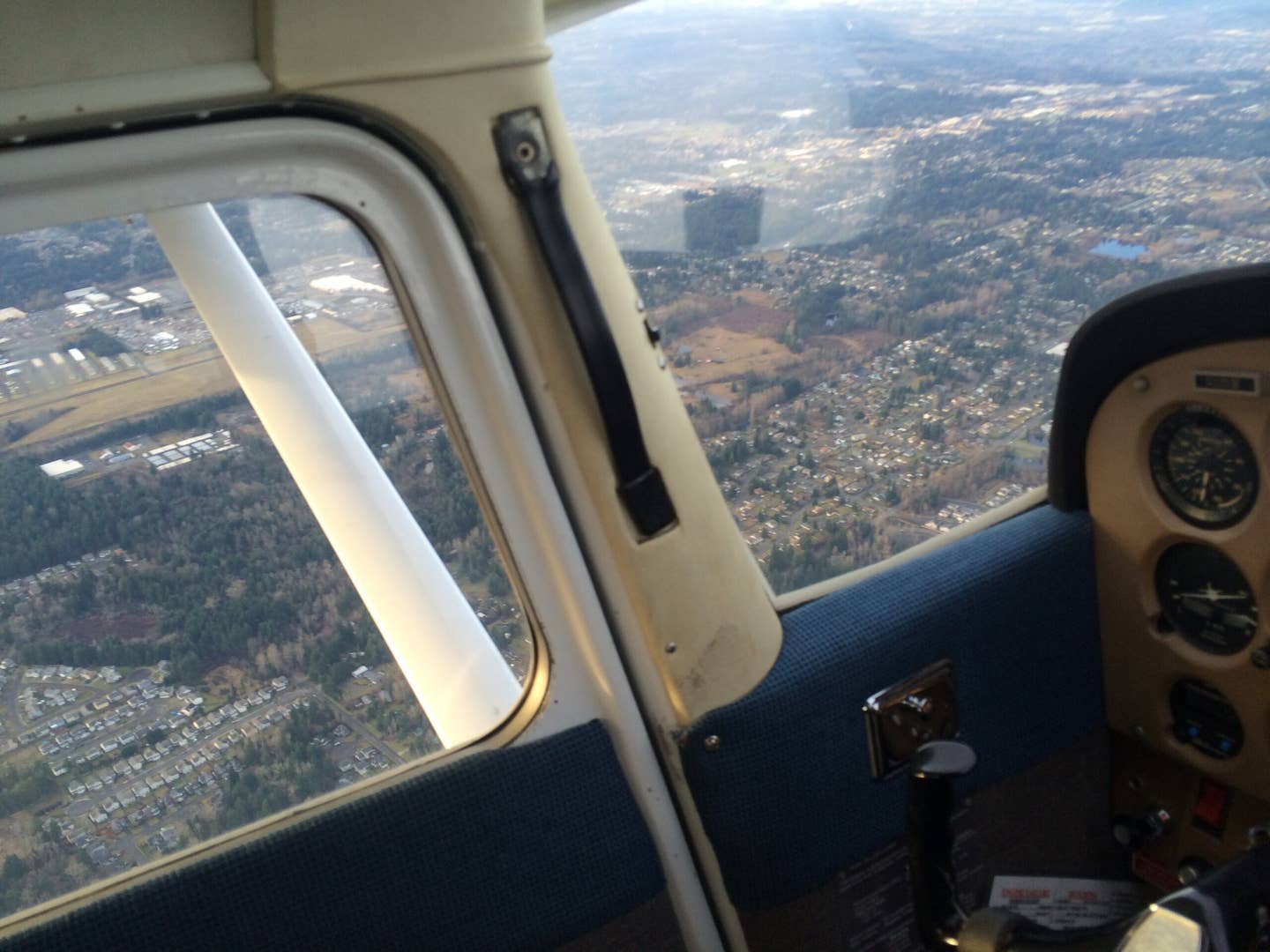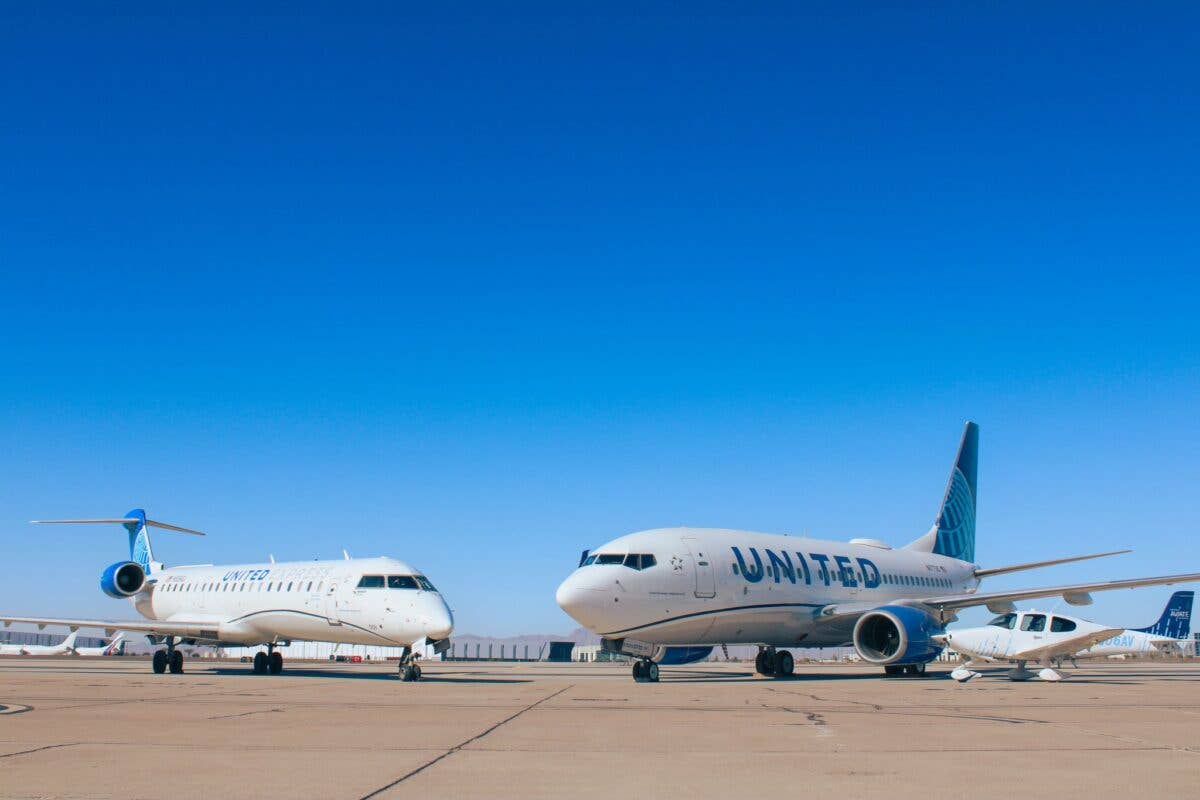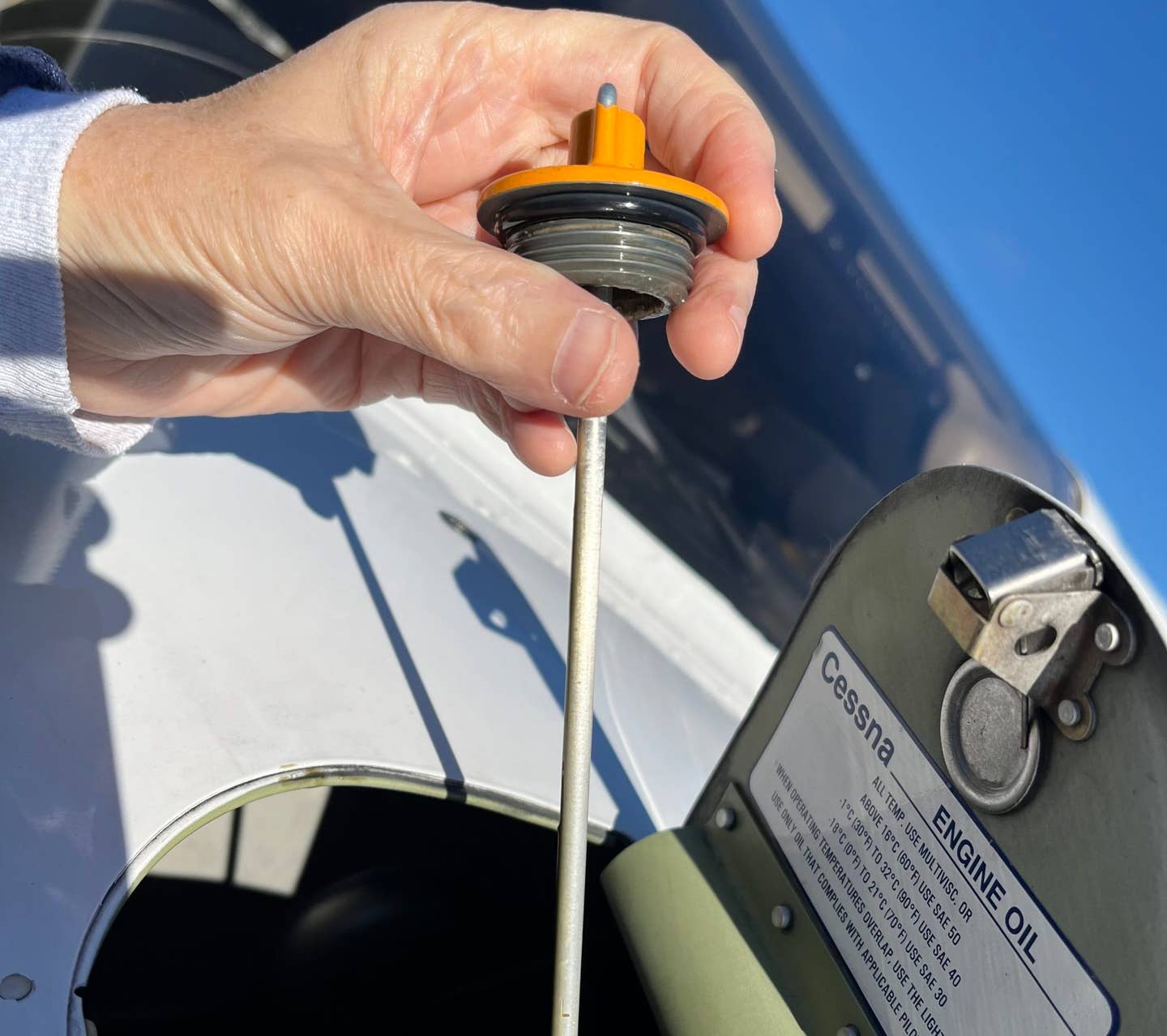Weather Minimums Memo at Florida Flight School Generates Controversy
A new policy at L3Harris Flight Academy in Orlando dictates that the weather must be below certain criteria before a flight can be canceled or penalties would be levied.

Developing personal minimums and learning to make the go/no-go decision is an essential part of flight training. [Courtesy: Meg Godlewski]
“If I wasn’t here right now, would you fly?”
I ask my private pilot candidates this when the weather is unstable or marginal VFR and falling. If they determine the weather does not support the mission, they need to explain why they came to that decision.
Developing personal minimums and learning to make the go/no-go decision is an essential part of their training. Developing that skill set can be tough to do when you are being pressured by a CFI intent on accumulating hours or a flight school with a policy that seemingly requires flight operations that would be below personal minimums for many pilots.
For example, a recent weather cancellation policy memo from L3Harris Flight Academy, based at Orlando Sanford International Airport (KSFB) in Florida, started burning up the blogosphere, as it dictates that the weather must be below certain criteria before a flight can be canceled or penalties would be levied.
The cross-country flight minimum of visibility of 3 sm and the ceiling of 2,000 feet stated in the memo is generating the most discussion, due in part to the definition of Marginal VFR as ceiling 1,000 to 3,000 feet and/or visibility 3 to 5 miles inclusive. The minima in the memo puts the aircraft in MVFR and well below the minimum altitude for 91.159 VFR cruising altitudes. The chance of a collision with other aircraft and obstacles down low increases because it puts the cross-country pilot down among those doing maneuvers.
There are L3Harris minima published for the cancellation of IFR flights as well. If the weather is equal to the lowest approach minimums at KSFB (there are three ILS approaches, so the aircraft can use those minimums that would take the aircraft down to 200 feet above ground) the flight is supposed to take place.
L3Harris is a Part 141 school and a pilot pipeline, ostensibly designed to create airline pilots as quickly and efficiently as possible. If the airplanes are not in the air, they don’t generate revenue, and the learners don’t progress in their training. It is frustrating and wasteful when a client no-shows or cancels at the last minute, but pushing these minima, and having the CFIs push them as company policy may be counterproductive to the creation of safe pilots.
FLYING was provided with a copy of the L3Harris memo from pilots concerned about it “sending the wrong message” and “encouraging scud running,” in addition to creating an atmosphere of extra pressure for both the pilots in training and the instructors.
The June 12 memo said: “To accurately predict equipment availability and efficiency in the schedule, we are adopting a new cancellation policy. If the weather conditions are at or better than the limitations, a cancellation is considered non-excusable.”
According to social media posts from people representing themselves as former or current clients or CFIs at L3Harris, the school allegedly requires the pilots to arrive at school an hour before flight time, and cancellations must be done in person, or the client is charged a $250 no-show fee.
The memo continues by encouraging the pilots to “be creative in your plan of action,” such as “changing routes to avoid deteriorating weather or thunderstorms. Be sure to use all available weather resources including but not limited to: local news reports, aviationweather.gov, ForeFlight, etc. In the event your flying proficiency does not meet the current weather, please speak with your Training Group Manager concerning a plan of action.
“No flights shall be flown in the area of a convective SIGMET without the approval of the chief flight instructor or their designee. All thunderstorms must be avoided by a margin consistent with safety. All severe thunderstorms should be avoided by at least 20 nm.”
Thunderstorms are often a daily occurrence in the Sunshine State yet “severe thunderstorms” was not defined. Last September in Kentucky we saw the fatal result of a CFI continuing a flight into approaching thunderstorms. Departing an airport in marginal weather limits the pilot’s options should the weather begin or continue to deteriorate.
The memo has been the topic of discussion at FAA safety meetings. The most common question was, “Is this legal in the eyes of the FAA?”
FLYING contacted the FAA and the agency replied: “VFR weather minimums are in Parts 91.155 and 91.157. Flight schools operating under Part 61 must comply with these minima. Flight schools operating under Part 141 may have additional minima established by their FAA Flight Standards District Office as part of their training curriculum.”
Legally, the L3Harris memo complies with FAA regulations. Is it an exercise in good judgment and aeronautical decision-making? I don’t believe so, and I am not the only one.
"Imposing mandatory weather minimums for student flight dispatch—to expedite flight training efficiency and protect profit margins—is both dangerous and counterproductive to building essential weather judgment,” said David St. George, executive director of the Society of Aviation and Flight Educators and a DPE. “This industrial flight training methodology, to improve dispatch rates, destroys the central focus of the FAA ACS—personal risk management.”
Added Karen Kalishek, chair of the National Association of Flight Instructors (NAFI): “NAFI has two primary areas of concern regarding L3Harris Flight Academy's published weather policy regarding non-excusable cancellations: One, There are many instances in which weather quickly deteriorates, and the L3Harris stated weather minima provide little margin for pilots to escape potentially decreasing ceilings and/or visibility, and two, imposed weather minimums are inconsistent with the FAA's intent that pilots should develop personal minimums that reflect their individual levels of proficiency and experience.
“The policy provides for a pilot to assess their personal proficiency and speak to a manager for an alternative plan of action. However, the 'non-excusable' terminology supports application of the default minimums.”
Attempts to find out if L3Harris operates with “additional minima established by their FAA Flight Standards District Office” were not successful, despite sending multiple emails and placing phone calls to the local FSDO and David Krug Jr., who signed the memo as the L3Harris chief flight instructor/head of flight training.
When FLYING reached Krug, he said he was aware the flight academy weather cancellation memo was a topic of conversation in the pilot blogosphere, adding, “I cannot speak to internal information. I am not going to say anything. We are addressing it internally. I understand the situation.”
There were multiple posts on social media from individuals who contacted the Orlando FSDO to report the perceived safety issues. A few posted the emails they received from the FSDO in reply, stating that their concerns were logged and an investigator had been or would be assigned. A check of the signature on the email corresponds to the Orlando FSDO employee directory.
According to the FAA, the agency does investigate safety concerns but “does not confirm or comment on investigations.”
Risk Part of Flight Training
Flight safety is about managing risk. The FAA’s Risk Management Handbook explores how pilots should evaluate risk, and that includes establishing personal weather minimums.
In Chapter 2, it states, "federal regulations that apply to aviation do not cover every situation nor do they guarantee safety," noting that “pilots who understand the difference between what is 'smart' or 'safe' based on pilot experience and proficiency establish personal minimums that are more restrictive than the regulatory requirements.”
Flight instructors are often the gatekeepers of personal minima—done in the form of limitations on a learner’s solo endorsement.
For example, the initial solo endorsement I give lists weather for flight in the pattern as 3 miles visibility and a 3,000 foot ceiling, and for the practice area, 5 miles of visibility. A weather briefing is a requirement as well. Crosswinds are limited to 6 knots, and that limitation is lifted and increased as the learner’s experience grows.
For the initial cross-country flights, visibility increases to 10 miles and the ceiling to 5,000 feet. After I review their flight plan, the trip-specific endorsement includes noting “weather checked as of (insert time).”
I wouldn’t feel comfortable or responsible sending a learner out solo on a cross-country flight with 3 miles visibility and a 2,000-foot ceiling as noted in the L3Harris minima.
There Is a Time and a Place
Personal weather minima is a fluid concept. It’s good to go out and stretch those skills from time to time with a CFI onboard. It can be a beneficial learning experience.
Weather minima are often dictated not only by the pilot’s experience but also proficiency and the mission. You probably wouldn’t take your non-flying, airplane-shy significant other up on a day with gusting crosswinds or turbulence.
A CFI (personally or by virtue of company policy) shouldn’t be pressuring the learner into making the flight, but it happens. Especially when the CFI and or company only gets paid when the propeller is turning.
Sometimes, the decision not to fly is the best choice. But it needs to be a choice and not something the client is financially penalized for.

Sign-up for newsletters & special offers!
Get the latest FLYING stories & special offers delivered directly to your inbox






